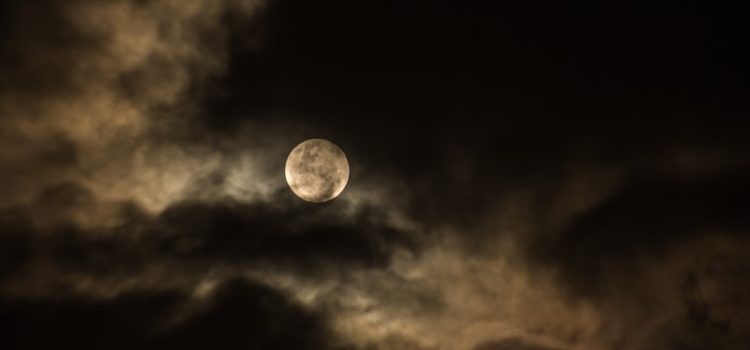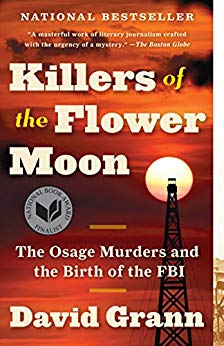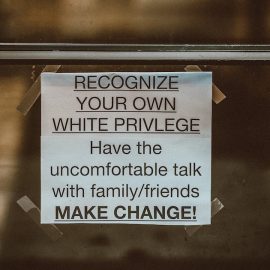

This article is an excerpt from the Shortform summary of "Killers of the Flower Moon" by David Grann. Shortform has the world's best summaries of books you should be reading.
Like this article? Sign up for a free trial here .
Who was John Ramsey in Killers of the Flower Moon? Did he participate in the Osage murders, and was he convicted?
John Ramsey was an associate of the bootlegger Henry Grammer, and he was identified as the murderer of Henry Roan. After a long and difficult case, Ramsey was convicted.
Continue reading to learn more about John Ramsey.
Ernest’s Confession Points to John Ramsey
Investigator Tom White was able to leverage information and get a confession from Ernest Burkhart, the husband of Mollie Burkhart and nephew of William Hale.
Ernest linked Hale directly to the murder of Henry Roan, stating that a contract killer named John Ramsey (another associate of bootlegger Henry Grammer) had been hired to kill him. Agents in the field immediately apprehended Ramsey, brought him into custody, and presented him with Burkhart’s signed confession. Ramsey, in turn, confessed to getting Roan drunk and shooting him in the back of the head.
Ernest, finally, gave key information about the murder of Anna Brown. He said that the mysterious “third man” spotted with Anna and his brother, Bryan Burkhart, on the last night Anna was seen alive was Kelsie Morrison—a man who was later engaged by the Bureau to work as an undercover operative. Ernest said that Morrison was, in fact, the man who had put the bullet in Anna Brown. All the awful pieces of the puzzle were finally coming together.
With her own husband now an admitted party to a plot to murder her entire family, Mollie Burkhart’s life was clearly in danger. She was moved to a hospital in Pawhuska. Once she was away from her husband and his family (and the duplicitous Shoun brothers), her condition markedly improved. Tom White’s team hauled the Shoun brothers in for questioning. But neither man admitted to knowing anything about the murders and both denied administering poison to Mollie. Mollie herself could not accept the idea that her own husband was a key player in the murder of her sisters.
Seeking Justice
With Burkhart and John Ramsey’s confessions in the books, Tom decided that it was time to talk to Hale. And while White’s agents couldn’t conclusively link Hale to all 24 Osage murders from 1921-1926, they could at least prove that he had benefited financially from many of them, including that of George Bigheart. But the calm and confident Hale was entirely unperturbed by the mounting evidence against him and refused to yield anything to the investigators. He simply told them that he was prepared to have his day in court and fight the charges. Lucky for investigator Tom White, the case was going to state court.
Fortunately, White had also worked with the Oklahoma state attorney general to draft murder charges on the Smith bombing for use in state court, in the event that the federal government was found to be lacking jurisdiction. Hale and John Ramsey were immediately re-arrested and put on trial for the murder of Bill and Rita Smith. Still, the trial would now be held in Hale’s domain of Osage County, presenting the prosecution with a steep uphill battle. The government assembled an all-star legal team for the prosecution, while Hale hired his own team of high-powered attorneys, which he was confident would help him defeat the charges.
The conviction of Ernest Burkhart, especially in state court, was certainly a victory for White and his team. But the case was far from over. They still needed to put Hale, Bryan Burkhart, and John Ramsey behind bars. But they did receive one bit of good news in this uphill battle: the U.S. Supreme Court had finally ruled that Henry Roan’s murder had been on federal land after all, and thus Hale and his henchmen could be tried in federal court.
On July 29, 1926, Hale was put on trial for aiding and abetting the murder of Henry Roan, while John Ramsey was charged with the killing itself. As the trial unfolded, the jury learned that the pair had originally plotted to kill Roan through the slow administration of poisoned moonshine—confirming to the Osage community that many of the slow, wasting deaths of their friends and family (likely including Mollie’s mother, Lizzie, and her other sister, Minnie) had actually been deliberate poisonings.
The prosecutor showcased to the jury the orgy of murder and mayhem that Hale had orchestrated for over five years. He said that Hale had turned the slaughter of wealthy Osage tribe members into a profitable business, turning men, women, and children into the prey of whites. But to the dismay of the prosecution and Tom White, the jury was unable to reach a unanimous verdict—the hung jury was the product of Hale’s campaign of bribery, intimidation, and tampering.
The case against Hale and Ramsey would have to be retried. This time, Bureau agents would safeguard the jury, hoping to minimize the possibility of Hale corrupting or intimidating them. During this second trial, Hale’s attorneys called Mollie to the stand and forced her to admit that she had once been married, albeit briefly, to Roan. They implied that Mollie’s now-incarcerated husband, Ernest Burkhart, had killed Roan out of jealousy and that the murder had had nothing to do with Hale.
But this time, the tricks and lies did not work. On October 29, 1926, both Hale and John Ramsey were found guilty of first-degree murder and sentenced to life imprisonment. Neither man made any statement upon the conviction and sentencing. The next year, Morrison was convicted of Anna’s murder, although Bryan Burkhart was ultimately given immunity by the prosecution.
John Ramsey was convicted for the death of Henry Roan, but many victims in Osage never saw the same justice served. John Ramsey’s conviction was held up by the FBI as a victory.

———End of Preview———
Like what you just read? Read the rest of the world's best summary of David Grann's "Killers of the Flower Moon" at Shortform .
Here's what you'll find in our full Killers of the Flower Moon summary :
- How the Osage tribe had vast oil wealth, but had it seized by their murderous neighbors
- The brutal and unresolved murders of Osage Native Americans
- The complicated history of the FBI in profiting from the Osage murders






